Mobile Journalism for Broadcasters: Essential Tools for Competing in a Sea of Voices
Eleanor Mannion of the Irish state broadcaster RTE and Dougal Shaw of the BBC recently collaborated on a podcast that highlights the very real and accessible value of mobile journalism for broadcasters (MoJo for short). Their coverage of the topic spoke to the rising popularity of MoJo among freelance journalists and broadcast organizations alike. That said, they emphasize the importance of having the right tools. In a quickly expanding sea of mobile journalists, simply having a smartphone and a message isn’t enough.
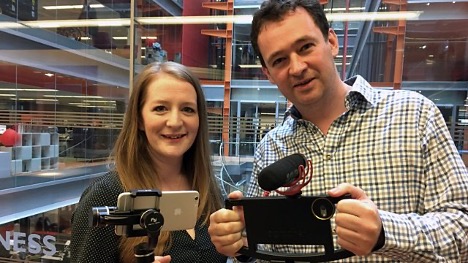
Eleanor Mannion with Irish state broadcaster RTE and the BBC’s Dougal Shaw recently recorded a podcast on their MoJo productions
This article explores the essential accessories for MoJo setups, provides practical advice on using these tools to enhance reporting, and discusses the importance of having access to a reliable publishing platform to support MoJo workflows. With the right equipment and strategies, broadcasters can harness mobile journalism to build their audiences on multiple platforms
Table of Contents
What is Mobile Journalism (MoJo)?
Mobile journalism, or MoJo, refers to using mobile devices like smartphones and tablets to gather, produce, and distribute news content. This leverages the portability and connectivity of modern devices to deliver timely, high-quality news directly from the scene.
Why Is Mobile Journalism Important for Broadcasters?
Mobile journalism has become an essential tool in the modern broadcasting landscape, driven by a convergence of technological advancements and evolving audience behaviors.
Improvements in smartphone camera quality and editing capabilities enable journalists to capture and produce broadcast-worthy content on mobile devices, lowering the barriers to entry, including cost and complication, for broadcasters of any size. However, this democratization of broadcast media has also led to a rise in “citizen journalism”. Larger broadcasters need to capture the power of mobile journalism to compete with a growing pool of voices.
Simultaneously, according to a 2022 survey by Deloitte, 65% of Gen Z and 61% of Millennials list social media as one of their top three preferred news sources. Broadcasters must publish quickly and frequently on social media to stay relevant to this audience.
The demand for speed and agility is therefore twofold: audiences want to see it and broadcasters must be fast to compete with traditional competitors and the aforementioned “citizen journalists” on the scene with a mobile phone. MoJo delivers on these needs as much as it creates them, allowing journalists to broadcast immediately from wherever news is unfolding.
Finally, all broadcasters are under pressure to produce more video content for display across multiple channels – television, websites, and social media, without increasing their budgets or headcount. Largely producing on equipment their reporters already own makes MoJo attractive for broadcasters looking to maximize efficiency and output.
Not surprisingly, in response to these trends, major news organizations worldwide have embraced MoJo as a core part of their news-gathering workflows. The BBC, Léman Bleu, and others now produce a significant percentage of their video content using smartphones and compact equipment. Also not surprisingly, much of the recent coverage of pro-Palestinian campus protests was created by student mobile journalists. By exploring mobile journalism, you are joining a robust and varied group of reporters spanning independent to major network journalism.
LiveTube: Streaming News the Moment It Breaks
Learn how one organization is broadcasting publically sourced content with journalistic standards.
Choosing Your MoJo Equipment
The key technological challenge with mobile journalism for broadcasters is producing broadcast-quality output without buying expensive broadcast equipment. Any recent Android or iOS smartphone can provide recording functions, but only if you add the right hardware devices and software apps. Let’s discuss hardware first.
There are few one-size-fits-all production hardware options. The first step with any hardware purchase is to consider the type of videos you’ll be producing and choose specific gear for those types of videos.
Microphones
The embedded microphones on smartphones perform well for phone calls but fall well short for live video production. Be sure to include an external microphone on your essential equipment list. The question is, what type of microphone?
If reporting from a live event, a shotgun microphone excels in noisy environments. Their directional capabilities focus on sounds toward which the mic is pointing, minimizing noise coming from other directions (Rode VideoMic GO II, ~$99).
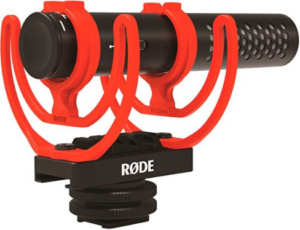
Figure 1. The Rode VideoMic Go II shotgun mic is a popular option for live event coverage.
The best option for personal interviews in a controlled setting is a wireless Lavaliere microphone clipped unobtrusively on the interviewee’s clothing. If you’ll also be on camera, you’ll need a dual Lavaliere microphone system (comica BoomX-D2 PRO Wireless Lavalier Microphone, $180) or a handheld microphone (comica HRM-S Handheld Wired Microphone, ~$50). Handheld mics are also better in a dynamic environment when interviewing multiple speakers without time to switch Lavaliere mics.
All the mics mentioned above can connect directly to a smartphone via direct connections or cables, with no expensive adapters, which is the simplest and cheapest approach. For projects where pristine audio quality is paramount, however, using a separate audio field recorder can greatly enhance capabilities and open up a broader range of microphone choices and recording techniques (Tascam DR-70D, ~$250).
Tripods and Gimbals
Other than a few outlier movies, it’s safe to say that no one enjoys watching shaky handheld footage. For this reason, choosing the right smartphone support system is critical for capturing stable and professional footage.
Static tripods are crucial for interviews or scenes where the camera remains stationary. Obviously, you need to match the height of your tripod to your planned usage; table tripods don’t work in crowds while a six-foot tall tripod may be cumbersome for an intimate interview.
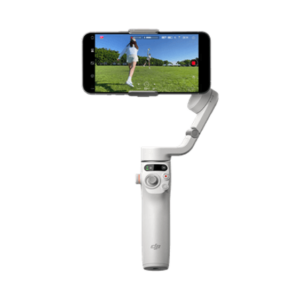
Figure 2. The DJI Osmo Mobile 6 gimbal smooths handheld shots.
If you’re shooting dynamic or moving scenes, consider a gimbal, which is a support device that allows your camera to remain stable and level, even when you’re moving. They work by using motors and sensors to counteract unwanted movement, so the camera maintains a steady and smooth orientation during motion. A smartphone gimbal should cost under $200 and will dramatically improve the quality of moving footage (DJI Osmo Mobile 6, ~$140).
Lighting
All cameras compensate in low-light situations by boosting the gain, which can look grainy even with expensive broadcast cameras. Your smartphone is not immune.
On-camera lighting solutions, typically small LED panels, are perfect for lighting subjects during close-up interviews. They allow your camera to capture with minimal gain. Consider buying a light with adjustable color temperatures and intensity, which simplifies usage.
However, note that these panels are effective only to about five to six feet, making them useless for large-scale or outdoor nighttime events. In these scenarios, you may be forced to choose between grainy footage or no footage at all.
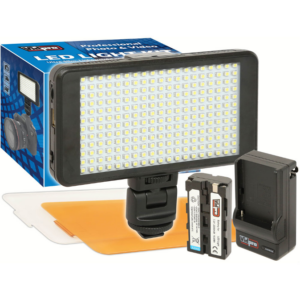
Figure 3. Not the most elegant color temperature adjustments but these battery-powered Vidpro lights can be convenient.
Lights always seem to run out of power faster than any other peripheral. So, if you are shooting away from AC power for long periods, consider lights that run on external batteries that you can swap in the field. Buy whatever chargers are necessary to keep the batteries charged and ready in the field (Vidpro Ultra-Slim LED-230 On-Camera Video Lighting Kit, ~$65).
Lenses
Given the small size smartphone manufacturers have to work with, the video quality produced by these devices is nothing short of astounding. But there’s a reason most film makers use huge lenses; “big glass” just produces better quality and often different looks that enhance storytelling.
Similarly, adding different lenses to a mobile journalism kit can enhance the visual capabilities of a smartphone camera. Wide-angle lenses are perfect for expansive shots in confined spaces, telephoto lenses are ideal for capturing distant subjects without loss of detail, and macro lenses allow for extreme close-ups with intricate detail. These lenses enhance storytelling by providing varied visual perspectives and depth to the footage (Apexel 4K HD Mobile Phone 5-in-1 Camera Lens Kit, ~$65).
Rigs
So far, we’ve discussed microphones, tripods and gimbals, lighting, and lenses; how do you integrate these into a cohesive setup you can use for static or dynamic mobile reporting? You use what’s often called a camera rig, which is a device used to mount and organize this equipment, making it easier to manage and use during the shoot. As you can see in Figure 4, in addition to locking in your camera, they typically provide cold shoe mounts to attach accessories like lights and microphones.
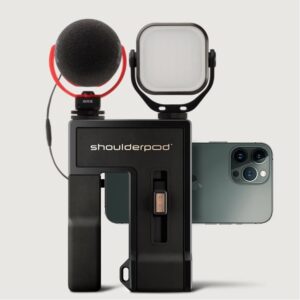
Figure 4. The Shoulderpod G2 camera rig with a microphone and LED light panel.
A well-integrated rig helps manage the equipment more efficiently and enhances mobility and adjustment ease during shoots. Since the rig must adjust to other equipment purchases, consider buying it last after you’ve decided on all other hardware (Shoulderpod G2 – Video grip, ~$70). Or consider purchasing a complete kit to ensure compatibility and ease of operation, minimizing the chances of connectivity issues during critical reporting moments.
Battery and Charging Solutions
Since mobile journalism for broadcasters can involve extended shooting periods, a reliable power source is essential. So, buy a fast-charging, high-capacity battery pack.
If your phone supports magnetic wireless charging, consider using options like MagSafe-compatible battery packs for iPhones or the Anker 622 Magnetic Battery ($39.99) for Android devices. These can be attached magnetically to your phone, allowing you to charge wirelessly while keeping the Lightning connector or USB-C port free for other accessories.
Carrying Case
A robust carrying case that can hold all the equipment—microphones, tripods, lights, lenses, batteries, and cables—is indispensable. For efficiency and protection, consider a case designed specifically for multimedia equipment, which often comes with customizable foam inserts to securely fit each piece of gear. Or prioritize kit purchases that include a case.
This is the hardware side; now let’s look at the software side.
Mobile Apps for Mobile Journalists
By design, Google and Apple design most smartphone apps for consumer use. This often translates to highly automatic operation with minimal configuration options. In contrast, mobile journalists need easy customization and access to advanced configuration options. For this reason, most mobile journalists acquire separate apps for shooting, editing, and other functions.
Camera Control Apps
Camera control apps are a great example. Most broadcast cameras feature extensive on-camera displays containing critical configurations like shutter speed, ISO, and white balance, and onscreen focus and exposure guides. Controls for these options are easily accessed via switches and dials on the camera body. The stock iOS and Android video recording apps show little of this detail and hide most configuration controls under multiple menu layers.
Installing and learning to use a camera control app should be the first app any mobile journalist should acquire. In this regard, Filmic Pro (iOS/Android, $39.99/year) is a highly regarded, very feature-rich alternative.
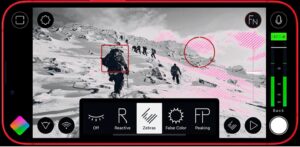
Figure 5. Filmic Pro delivers broadcast-quality features, like zebra stripes, to your smartphone.
If you edit on DaVinci Resolve, consider BlackMagic Camera (iOS only, free), which offers cloud storage and project interaction with the DaVinci desktop editor. Protake – Mobile Cinema Camera ($19.99/year) is another well-featured and highly regarded camera app (iOS only, $19.99/year), as is mcpro24fps video camera (Android, $17.99).
Note that if you’re using a gimbal, the companion app may offer sufficient camera controls, so you might want to explore these before investing in separate camera control apps. Conversely, if you bought the gimbal first, try to find a recording app that integrates operation with that gimbal.
Video Editing Apps
Video editors are the key to unlocking the story in your recorded videos. More than any other MoJo app, however, your video editor has to fit your eye and work style; an editor that fits like a glove for one journalist may feel clunky and unintuitive to another. So, take the time to experiment with several video editors and find the one that feels right.
The candidate list is extensive. One of the most popular apps is CapCut, though it’s expensive ($75/year) and since ByteDance owns it, may be banned in the US along with TikTok. LumaFusion Pro is another solid choice ($29.99, iOS/Android).
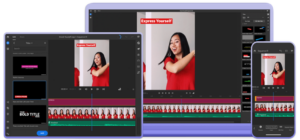
Figure 6. Adobe Rush builds projects you can finalize in Adobe Premiere Pro.
Adobe Premiere Rush is great if you edit with Adobe Premiere Pro on your desktop because you can transition projects from mobile to desktop (iOS/Android, free). On last option is KineMaster, which offers high-quality templates and visual effects ($49.99, iOS/Android).
Audio Recording
If you’ll be narrating or adding voiceovers to your productions, you’ll want an audio recorder that can record high-quality audio and enhance it with background noise reduction or effects like compression. You might want an app that can transcribe your narration or add multi-track editing capabilities if you’re mixing multiple inputs. All this goes far beyond the capabilities of the stock audio recorders/editors in iOS and Android.
In these cases, list the features you’ll need and scroll through your App Store for candidates. Voice Record Pro is a popular free option for iOS and Android. For more advanced functionality, Ferrite Recording Studio is a popular choice on iOS ($29.99), with WavePad Audio Editor highly rated on Android.
More Tips and Trends for Broadcasters:
Additional Tools
Beyond the fundamental editing and capturing apps, mobile journalists benefit from a range of additional tools to enhance their productivity. Teleprompter apps, like BigVu (iOS/Android, up to $14/month), help journalists deliver their lines naturally without having to memorize extensive scripts. Opt for an app like BigVu that displays your script while recording on your smartphone—this dual functionality is not commonly found in other teleprompter apps, which typically only display text for recording with separate cameras.
In addition, cloud storage solutions like Google Drive or Dropbox are indispensable for quickly backing up footage and sharing files with production teams or editors in different locations.
Live Streaming Platforms
Many mobile journalists often publish their work on social media, but they usually do so using a private live-streaming platform. This allows them to easily repurpose the same content for live or on-demand viewing on the publisher’s website. It can also facilitate simulcasting across social media and websites, allowing mobile journalists to reach multiple platforms with one stream.
Beyond this functionality, private live streaming platforms provide essential capabilities particularly beneficial for mobile journalists. For example, many feature custom mobile recording apps that access regional points of presence to reduce upload times and enhance stream stability, ensuring reliable content delivery. These platforms also emphasize security with advanced privacy settings and robust access controls, crucial for protecting content and viewer data during sensitive broadcasts.
On the delivery side, these platforms enable direct streaming to a broadcaster’s specific audience, offering customizable encoding options and delivery through a content delivery network (CDN). This setup ensures that viewers experience high-quality streams with minimal buffering.
After the broadcast, detailed video analytics help broadcasters gain insights into viewer engagement and preferences so they can further tailor their content to meet audience needs. Overall, private live streaming platforms equip mobile journalists with critical tools, making them indispensable for broadcasters aiming to boost their streaming performance and engage more effectively with their audiences.
Learn more about what to look for in a streaming platform provider.
FREE TRIAL
Live stream and Video On Demand for the web, apps, and onto any device. Get started in minutes.
- Stream with WebRTC, HLS and MPEG-DASH
- Fully customizable with REST and Java APIs
- Integrate and embed into your apps




